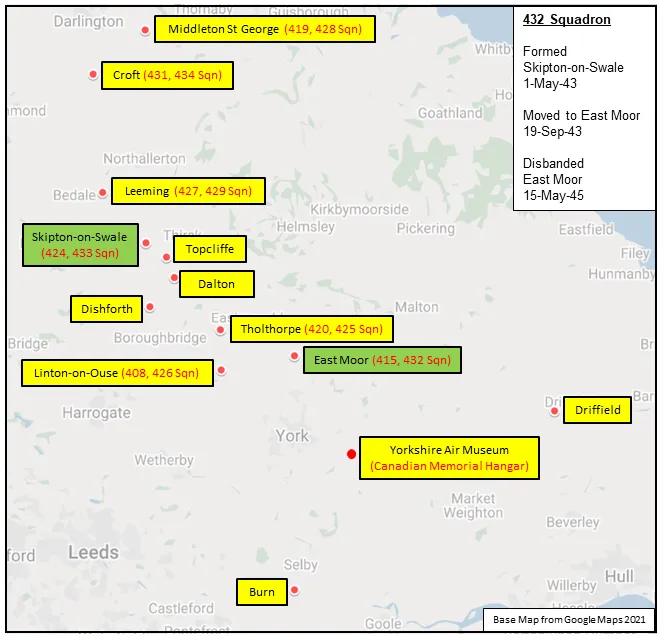Previous Events
1943-02-25 Flight Sergeant - Survived | |
Wellington B. Mk. X HE369 QB | 424 (B) Sqn (RCAF) |
Take-off: 18:20:00 | Target: Wilhelmshaven Germany |
Wellington B. Mk. X HE369Bombing Wilhelmshaven Germany 1943-February-24 to 1943-February-25
424 Tiger Squadron (Castigandos Castigamus) RAF Topcliffe, Wellington BX aircraft HE 369 QB-P crashed on the aerodrome at Topcliffe, Yorkshire, returning from an operation to Wilhelmshaven, Germany. The cause of the crash was not determined
P/O RSB Worley (RCAF), FS J Banks (RAFVR) and Sgt AA Wiles (RAFVR) were killed in action in the crash
FS WA Sparrow (RCAF), Sgt J Harrison (RCAF) and Sgt FWN Trowbridge (RAFVR) survived, injuredFS WA Sparrow (RCAF) survived, injured. Please see Worley, RSB for complete casualty list and flight detail
FS Sparrow would be killed 1943-06-25 on 432 squadron Wellington X aircraft HF 572 QO-J on a raid to Wuppertal, Germany
Others on the Aircraft
 1943-02-25 RAFVR Flight Sergeant James Banks KIA 2022-10-31
1943-02-25 RAFVR Flight Sergeant James Banks KIA 2022-10-31  1943-02-25 RCAF Sergeant J Harrison Survived 2022-10-31
1943-02-25 RCAF Sergeant J Harrison Survived 2022-10-31  1943-02-25 RCAF Flight Sergeant William Albert Sparrow Survived 2022-10-31
1943-02-25 RCAF Flight Sergeant William Albert Sparrow Survived 2022-10-31  1943-02-25 RAFVR Sergeant Frank William Noel Trowbridge Survived 2022-10-31
1943-02-25 RAFVR Sergeant Frank William Noel Trowbridge Survived 2022-10-31  1943-02-25 RAFVR Sergeant Alfred Albert Wiles KIA 2022-10-31
1943-02-25 RAFVR Sergeant Alfred Albert Wiles KIA 2022-10-31  1943-02-25 RCAF Pilot Officer Robert Stephen Borden Worley KIA 2022-10-31
1943-02-25 RCAF Pilot Officer Robert Stephen Borden Worley KIA 2022-10-31 



 Daily Operations 6bombergroup.ca
Daily Operations 6bombergroup.ca Canadian Virtual War Memorial
Canadian Virtual War Memorial Commonwealth War Graves Commission
Commonwealth War Graves Commission Find-A-Grave.com
Find-A-Grave.com Library and Archives Canada Service Files (may not exist)
Library and Archives Canada Service Files (may not exist) Toronto, Ontario
Toronto, Ontario
 P
P
 Wikipedia Vickers Wellington
Wikipedia Vickers Wellington YouTube Vickers Wellington documentary
YouTube Vickers Wellington documentary

